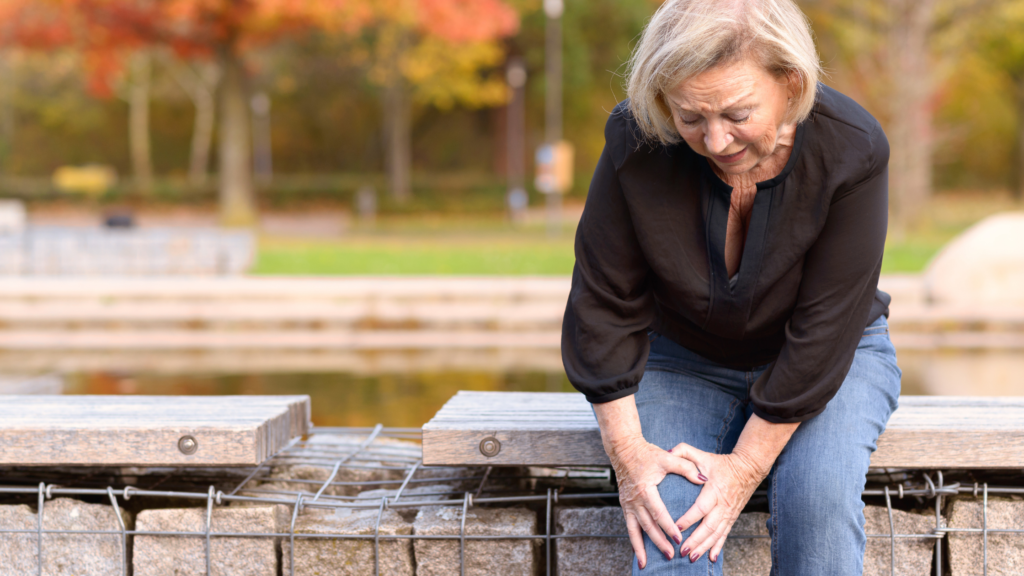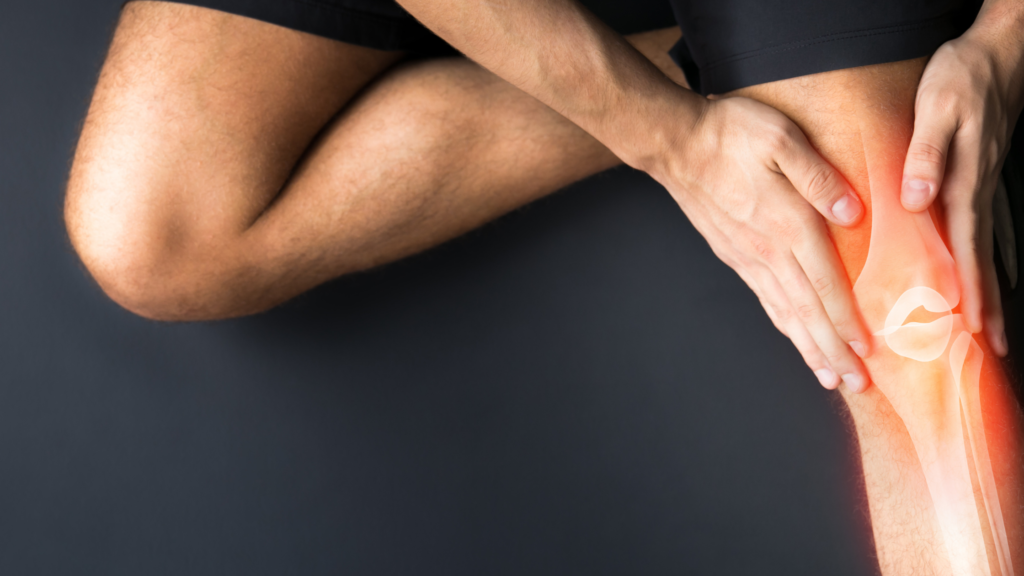Pain relief and solid recovery without pain medications and expensive medical bills. Hip and knee pain can keep you from the activities you love, as well as make routine tasks difficult. But there are many ways to get you moving again pain-free, without surgery.

Whether you’ve been battling knee or hip pain for years, or are feeling the first twinges of pain today, Better Knees and Hips, will show you the best ways to get relief so you can stay active and independent for years to come.
Do your knees or hips hurt? Is it aggravated during an activity like when you are walking or playing sports?.

Most people will at some point have knee or hip pain because these large joints have a demanding task: they must bear the full weight of your body while at the same time allowing for a wide range of motion. Wear and tear, injury, and simple genetic predisposition can all contribute to knee or hip pain.
Your knees and hips are your largest joints. They support your body’s weight and must work in close coordination to provide the mobility most people take for granted, until injury, arthritis, or other problems interfere.
WHAT’S CAUSING KNEE PAIN
Some of the most common problems are sprained ligaments, meniscus tears, tendinitis, and runner’s knee.
If you have an old knee injury that wasn’t properly treated, it may flare up now and then or hurt all the time.
Bursitis: A bursa is a sac that holds a small amount of fluid that’s under the skin above your joint. It helps prevent friction when the joint moves. Overuse, falls, or repeated bending and kneeling can irritate the bursa on top of your kneecap. That leads to pain and swelling.
Doctors call this prepatellar bursitis. You may also hear it called ”preacher’s knee.”
Dislocated kneecap: This means that your kneecap slides out of position, causing knee pain and swelling. Your doctor/physio may call this “patellar dislocation.”IT (iliotibial) band syndrome: The iliotibial (IT) band is a piece of tough tissue that runs from your hip down to the outer part of your knee. When you overdo activity, it can become inflamed over time. That causes pain on the outer side of the knee. It’s common among runners when going downhill.
Meniscal tear: Sometimes, a knee injury can cause cartilage to rip. These rough edges can get stuck in the joint, which causes pain and swelling. Many times, people will have the sensation of “catching” in the joint when they are active.
Osgood-Schlatter disease: This condition happens when you’re young, when bones and other parts of the knee are still changing. It can cause a painful bump below the knee, where a tendon from the kneecap connects to the shin. Overdoing exercise, and irritation at a point on the bottom of your knee called the tibial tubercle, often make this area hurt. The ache may come and go over time. It’s especially common in teenage boys and girls.
Osteoarthritis: This is the “wear and tear” type of arthritis. It’s a top cause of knee pain after age 50. This condition causes the knee joint to ache or swell when you’re active. Joints affected by osteoarthritis can also be stiff early in the day.
Patellar tendinitis: This means you have inflammation in the tendon that connects the kneecap to the shinbone. Tendons are tough bands of tissue that connect muscles to your bones. When you overdo exercise, they can become inflamed and sore. You may also hear it called “jumper’s knee” because repetitive jumping is the most common cause.
Flat foot. If your foot has a fallen arch this will put a strain on the knee joint causing friction and increased stress on ligaments and tendons of the region which in turn will lead to inflammation of the joints, thus causing pain. As a matter of fact, if this stress is allowed to continue it will lead to degenerative changes in the knee as well as the hip joint thus causing osteoarthritis of the knee and hip. Which often leads to the knee or hip joint replacement surgery.
11 KNEE PAINS DO’S & DONT’S
Follow these 11 dos and don’ts to help your knees feel their best.
Don’t rest too much. Too much rest can weaken your muscles, which can worsen joint pain. Find an exercise program that is safe for your knees and stick with it. If you’re not sure which motions are safe or how much you can do, talk with your physical therapist.
Do exercise. Cardio exercises strengthen the muscles that support your knee and increase flexibility. Weight training and stretching do, too. For cardio, some good choices include walking, swimming, water aerobics, stationary cycling, and elliptical machines. Tai chi may also help ease stiffness and improve balance.
Don’t risk a fall. A painful or unstable knee can make a fall more likely, which can cause more knee damage. Curb your risk of falling by making sure your home is well lit, using handrails on staircases, and using a sturdy ladder or footstool if you need to reach something from a high shelf.
Do use “RICE.” Rest, ice, compression, and elevation (RICE) is good for knee pain caused by a minor injury or an arthritis flare. Give your knee some rest, apply ice to reduce swelling, wear a compressive bandage, and keep your knee elevated.
Don’t overlook your weight. If you’re overweight, losing weight reduces the stress on your knee. You don’t even need to get to your “ideal” weight. Smaller changes still make a difference.
Don’t be shy about using a walking aid. A crutch or cane can take the stress off of your knee. Knee splints and braces can also help you stay stable
Do consider acupuncture. This form of traditional Chinese medicine, which involves inserting fine needles at certain points on the body, is widely used to relieve many types of pain and may help knee pain.
Don’t let your shoes make matters worse. Custom orthotics can reduce stress on your knees. Knee pain can be alleviated using custom orthotics. Knee pain may be a result of sudden injury, an overuse injury, or the symptom of an underlying condition, such as arthritis. Your doctor/physical therapist’s approach to treating your knee pain will depend on the underlying cause. But in most cases, treating your knee is more likely to be successful when the focus is on restoring balanced function in the entire body—starting from the ground up—rather than simply reducing the pain and inflammation in the irritated tissues.
EXERCISE PLAN FOR KNEE PAIN
Consult your physiotherapy for proper evaluation.
Straight Leg Raises. If you risk an injury. your knee’s not at its best, start with a simple strengthening exercise for your quadriceps, the muscles in the front of the thigh. This move puts little to no strain on the knee. Lie on your back on the floor or on another flat surface. Bend one knee and place your foot flat on the floor. Keeping the other leg straight, raise it to the height of the opposite knee. Repeat 10-15 times for three sets.
Start in a seated position on a bench with your legs stretched out in front of you.
Bend your toes in towards you and push your knee down into the bench.
Raise one leg slightly.
Hold, and then return to the starting position.
Hamstring Curls. These are the muscles along the back of your thigh.
Lie flat on your stomach. Slowly bring your heels as close to your butt as
you can, and hold that position. Do three sets. You can also do this
exercise standing while you hold onto a chair and lift one leg at a time.
If this becomes easy, you can add ankle weights, slowly increasing the
weight.
Walking to Ease Knee Pain
Rebuilds joints. When you have OA, cartilage — the springy tissue in your joints that acts like a shock absorber for your knees — can become damaged and worn. The result: pain, stiffness, and problems moving. Exercise can help rebuild the joint.
Strengthens your legs. Walking builds your muscles so they can take the pressure off your joints and handle more of the weight themselves. That means less pain for your knees. Listen to Your Body. To stay healthy, you should get 30 minutes of exercise most days of the week. You don’t have to get it all at once — 10 minutes of walking here and there is a great idea. But don’t push yourself.
Helps you lose weight. For every pound you lose, there’s four times less pressure and stress on your knees. When there’s less pressure, there’s less pain. That can make a big difference to painful joints. Walking is a great low-impact way to help you lose extra weight.
Live the active life you deserve! Surgery-free pain relief for knees is possible. Over the last 20 years of physio services, I have treated successfully my patients with chronic knee pains for years, speed up injuries recovery and prevent them from expensive knee surgery and replacement.
Knee pain can keep you from the activities you love, as well as make routine tasks difficult.
But there are many ways to get you moving again pain-free, without surgery.
TREATMENT PLAN BY DON KELLY
If you experience chronic knee pain, injuries, or advice for knee surgery and replacement please don’t hesitate to reach out. I have treated thousands of my patients with successful results over the last 20 years of my physio services.
BEFORE YOU SAY YES TO KNEE SURGERY REPLACEMENT- give me a ring for an assessment.
My treatment plan is the result of my experience and knowledge in treating chronic pains and injuries over the last 20 years. This is the holistic plan to guarantee pain relief, prevent recurring pains, and faster recovery.
EVALUATION/ASSESSMENT
PHYSIOTHERAPY PLAN BASED ON MY ASSESSMENT
HOMECARE EXERCISE/PLAN
ACUPUNCTURE
EXERCISE PROGRAMME
CUSTOM ORTHOTICS


